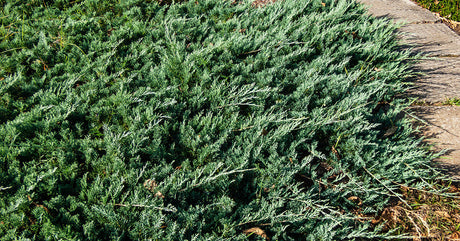

Planting Hedges and Screens
|
|
Time to read 5 min

|
|
Time to read 5 min
Planting hedges and screens are phenomenal alternatives to fences or walls. They’re perfect for enhancing your landscape appeal while serving a highly functional purpose.
Your hedges and screens are going to be there for years. For this reason, it’s worthwhile to do some due diligence to ensure you’re planting them appropriately.
There isn’t a universal set of rules for planting hedges and screens, it can easily vary by plant selection. However, we have listed some common best practices below, separated by informal, formal, and privacy tree plantings.
Informal hedges are hedges you plant without any intention of rigorous training into a continuous, uniform hedge. This includes varieties like Pittosporum, Gardenias, Hydrangeas, and Azaleas.
First, determine the mature width of your shrub
Next, place a stake about half of the mature plant width away from where you want your hedge to end.
From this first stake, measure 2/3 to 1/2 of the ‘mature plant width’ away from your first stake, and place a second stake. Continue this until you have spanned the length of your planting location.
Example: You have a shrub with a mature width of 6 feet. Planting them 1/2 of the mature width apart would mean having 3 feet between each shrub trunk. While planting them 2/3’s of the mature width apart would leave them about 4 feet apart.
There’s no hard rule for spacing most shrubs. However, your plants are supposed to intertwine. Plant them closer for a faster and tighter hedge, and further away for a slower hedge that is easier on the wallet.
At this point, it’s time to go through and dig your holes at every spot where you place a stake.
Dig your holes twice as wide as the pot they came in to promote root expansion.
Now that your shrubs are planted, you’re going to need to water them regularly to ensure that they establish themselves well.
Mulch will help prevent them from losing moisture from the top of the soil due to evaporation.
Regular fertilization will promote new growth in your newly establishing hedges, and will help them fill in the gaps quicker. Be careful not to over-fertilize, which can prove deadly for your shrubs. A fertilizer high in nitrogen, such as 10-8-8, will promote foliage growth. This will help your plants reach a larger size faster.
Formal hedges often include plants like Boxwoods, Ilex, or Privet. Essentially, any variety can be trimmed into hard shapes.
Planting Privacy Trees is a bit different from planting shrubs. Spacing can vary considerably due to growth habit and root spread.
Like informal and formal shrubs, closer tree plantings will result in faster coverage. However, plant them too close, and they may crowd each other out.
Listed below are some popular privacy trees and their minimum planting distances:
Green Giant Arborvitae: 5+ feet
Leyland Cypress: 5+ feet
Blue Point Juniper: 2-4 feet
Spartan Juniper: 3-4 feet
(Don’t see your species listed above? We can help! Contact us)
After determining the appropriate spacing for your species, planting can be done similarly to the informal or formal hedges.
Regular fertilization will promote new growth and will help them fill in the gaps.
If you want your screen or hedge to fill in even faster, stagger your shrubs (shown by the diagram below). This will take up more space but is the best way to create a full hedge quickly. This works well with both trees and shrubs.
Remember that with some prep work, your hedge and screen dreams can go off without a hitch!
Thank you for reading! Be sure to Contact Us with any questions you might have.






PBM Team |



